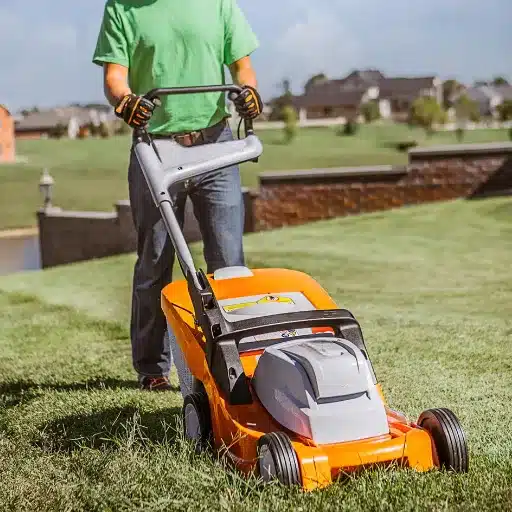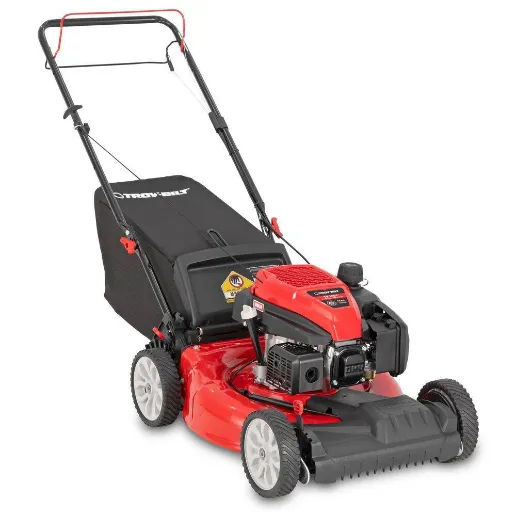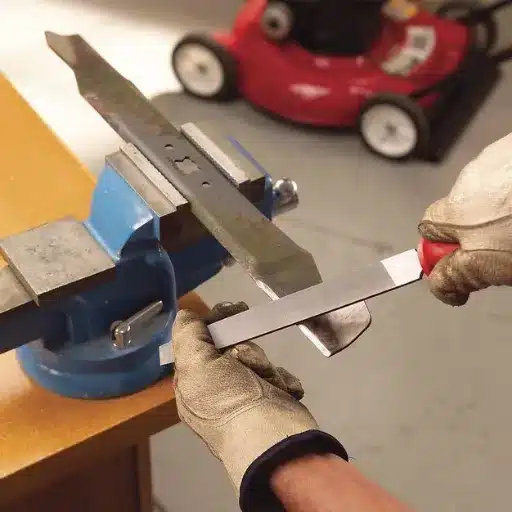Types of Lawn Mowers

Understanding the different types of lawn mowers available is crucial for making an informed decision. Each type is designed for specific lawn sizes, terrains, and user preferences.
| Type | Power Source | Best Use | Cut Style | Ideal Terrain |
|---|---|---|---|---|
| Push Mowers | Manual | Small lawns | Basic | Flat |
| Self-Propelled | Engine-driven | Medium lawns | Consistent | Mixed |
| Reel Mowers | Manual | Small lawns | Precise | Flat |
| Rotary Mowers | Engine | All lawn sizes | Versatile | All terrain |
| Hover Mowers | Electric | Slopes | Floating | Uneven |
| Riding Mowers | Engine | Large lawns | Efficient | Open areas |
| Zero-Turn | Engine | Complex landscapes | Sharp turns | Obstacles |
| Robotic | Electric | Automated care | Fine mulch | All terrain |
Detailed Mower Types

Push Lawn Mowers
Best For: Small to medium lawns
Key Features:
- Zero emissions (manual models)
- Lightweight and maneuverable
- Cutting deck: 14-22 inches
- Available in gas, electric, and manual reel versions
Pros:
- Environmentally friendly
- Affordable
- Easy storage
- Great exercise
Cons:
- Physical effort required
- Time-consuming for large areas
- Limited power
Self-Propelled Lawn Mowers
Best For: Medium-sized lawns and hilly terrain
Key Features:
- Built-in drive system
- Variable speed settings
- Engine range: 140cc-190cc
- 3-in-1 cutting options
Pros:
- Reduced physical effort
- Good for slopes
- Versatile cutting options
- Efficient coverage
Cons:
- Higher cost than push mowers
- More maintenance required
- Heavier than push models
Zero-Turn Mowers
Best For: Large lawns with obstacles
Key Features:
- Zero turning radius
- Engine power: 20-30+ HP
- Cutting width: 42-72 inches
- Speed: Up to 8 mph
Pros:
- Exceptional maneuverability
- Fast mowing speeds
- Professional results
- Time-efficient
Cons:
- High initial cost
- Learning curve required
- Not ideal for steep slopes
Traditional Riding Mowers
Best For: Large properties with varied terrain
Key Features:
- Steering wheel control
- Cutting width: 30-54 inches
- Engine power: 12-24 HP
- Attachment compatibility
Pros:
- Comfortable seating
- Stable on slopes
- Versatile attachments
- Easy to operate
Cons:
- Larger turning radius
- Slower than zero-turn
- Requires storage space
Used Lawn Mowers for Sale

Benefits of Buying Used Lawn Mowers
- Significant Cost Savings: Save 30-50% compared to new models
- Environmental Benefits: Reduces waste and promotes sustainable practices
- Access to Premium Features: Afford higher-end models with advanced features
- Refurbished Options: Many dealers offer professionally restored equipment
- Wide Selection: Choose from various brands and models to fit specific needs
Where to Find Used Lawn Mowers
| Source | Advantages | Considerations |
|---|---|---|
| Online Marketplaces (eBay, Craigslist, Facebook) |
Wide selection, competitive prices, detailed listings | Inspect carefully, verify seller reputation |
| Specialized Retailers | Professional inspection, warranties available | Higher prices than private sales |
| Garage Sales & Classifieds | Significant savings, local pickup | Limited selection, as-is condition |
| Big-Box Stores (Home Depot, Lowe’s) |
Trade-in programs, return policies | Limited used inventory |
| Auction Sites | Great deals, variety of options | Competitive bidding, inspection limits |
| Landscaping Companies | Commercial-grade equipment, reasonable prices | Higher usage, professional maintenance |
Inspection Checklist for Used Mowers
| Component | What to Check | Red Flags |
|---|---|---|
| Engine | Performance, starting, smooth operation | Hard starting, excessive smoke, unusual noises |
| Tires | Tread depth, even wear, proper inflation | Cracking, uneven wear, low pressure |
| Body & Frame | Structural integrity, rust, dents | Excessive rust, cracks, bent components |
| Cutting Deck | Condition, levelness, blade sharpness | Severe rust, damage, dull blades |
| Battery | Charge capacity, terminal condition | Won’t hold charge, corroded terminals |
| Belts & Cables | Tension, wear, proper routing | Cracking, fraying, improper adjustment |
| Controls | Responsiveness, smooth operation | Sticking, loose, unresponsive |
Lawn Mower Buying Guide

Assessing Your Lawn Size and Type
| Lawn Size | Recommended Mower | Cut Width | Key Features |
|---|---|---|---|
| Small (< 0.25 acre) |
Push/Electric | 14-22″ | Lightweight, maneuverable, eco-friendly |
| Medium (0.25-1 acre) |
Self-propelled | 21-42″ | Variable speed, 3-in-1 cutting |
| Large (> 1 acre) |
Riding/Zero-turn | 42-72″ | Comfort features, high efficiency |
| Hilly Terrain | Self-propelled | 21-61″ | Good traction, stability control |
| Flat/Open | Zero-turn | 42-72″ | Speed, precision, maneuverability |
Electric vs. Gas Mowers Comparison
Electric Mowers
Advantages:
- Quieter operation
- Zero emissions
- Lower maintenance
- Instant start
- Lighter weight
Best For:
- Smaller lawns
- Noise-sensitive areas
- Environmentally conscious users
Gas Mowers
Advantages:
- More powerful
- Unlimited runtime
- Better for thick grass
- Handles tough terrain
- Generally less expensive
Best For:
- Large lawns
- Thick, tough grass
- Commercial use
Understanding Mower Attachments
Mower attachments can significantly enhance your lawn care capabilities and provide year-round utility for your investment.
| Attachment | Function | Benefits | Best For |
|---|---|---|---|
| Baggers | Collect grass clippings | Clean finish, easy disposal | Formal lawns, disease prevention |
| Mulching Kits | Re-cut clippings finely | Natural fertilizer, reduces waste | Healthy lawn maintenance |
| Aerator Attachments | Improve soil compaction | Better root growth, water absorption | Compacted or heavy-traffic areas |
| Dethatchers | Remove thatch buildup | Improved lawn density (up to 30%) | Thick grass, annual maintenance |
| Dump Carts | Transport materials | Multipurpose utility, 300-1,500 lb capacity | Large properties, landscaping projects |
| Snow Throwers | Clear snow and debris | Year-round equipment use | Cold climates, seasonal versatility |
Pricing and Deals on Lawn Mowers

Average Price Ranges by Mower Type
| Mower Type | Price Range | Power Source | Best Use | Maintenance Level |
|---|---|---|---|---|
| Push Mowers | $100-$500 | Manual/Electric | Small lawns | Low |
| Self-Propelled | $350-$1,000 | Gas/Electric | Medium lawns | Moderate |
| Robotic Mowers | $800-$3,000 | Electric | All sizes | Low |
| Riding Mowers | $1,800-$5,000 | Gas | Large lawns | High |
| Zero-Turn Mowers | $3,000-$5,000+ | Gas | Large, flat lawns | Moderate |
Best Times to Buy for Maximum Savings
Seasonal Buying Strategy
- Late Summer/Early Fall: 20-30% discounts as retailers clear inventory
- Holiday Sales: Memorial Day, Labor Day, Fourth of July promotions
- End of Fiscal Quarters: Clearance sales with $50-$150 reductions
- Spring Sales: Limited discounts on previous year models
Where to Find Lawn Mowers Near You
- Local Hardware Stores: Personalized service, local support
- Garden Centers: Specialized expertise, seasonal promotions
- Home Improvement Retailers: Wide selection, competitive pricing
- Online Classifieds: Craigslist, Facebook Marketplace for used options
- Repair Shops: Quality pre-owned mowers, trade-in opportunities
- Seasonal Sales Events: End-of-season clearances, holiday promotions
Frequently Asked Questions
What types of outdoor power equipment are available for mowers for sale?
When looking for mowers for sale, you can find gas lawn mowers, electric lawn mowers, riding lawn mowers, and walk-behind mowers. Each type serves different needs depending on your lawn size and mowing preferences.
How do I choose the right lawn mower for my yard?
Consider your lawn size, grass type, and terrain. For larger areas, riding mowers or zero-turn mowers are ideal, while smaller lawns can be managed with walk-behind or reel lawn mowers. Factor in your physical capabilities and time constraints as well.
What’s the difference between gas and electric lawn mowers?
Gas mowers are typically more powerful and suitable for larger lawns, while electric mowers are quieter, more environmentally friendly, and require less maintenance. Your choice depends on lawn size, power needs, and environmental preferences.
Are used riding lawn mowers a good investment?
Yes, used riding lawn mowers can offer excellent value, allowing you to save 30-50% compared to new models. However, it’s important to thoroughly inspect the condition and maintenance history before purchasing.
What should I include in my lawn mower maintenance schedule?
Regular maintenance should include checking and replacing mower blades, cleaning the mower deck, monitoring oil levels, and inspecting battery health for electric models. Consistent maintenance ensures optimal performance and extends equipment lifespan.
Can I find replacement lawn mower parts easily?
Most lawn mower dealers and online retailers offer a variety of replacement parts, including blades, decks, and essential components. Knowing your specific model number ensures you find compatible parts.
What are the benefits of mower attachments?
Mower attachments like baggers, mulchers, and aerators can enhance your mowing experience by providing additional functionality, improving lawn health, and extending the utility of your equipment throughout the year.
Final Recommendation: Take time to assess your specific lawn care needs, including size, terrain, and personal preferences. Consider both new and used options, factor in long-term maintenance costs, and don’t forget to account for seasonal buying opportunities to maximize your investment value.
Reference Sources
-
REPOR T RESUMCS
This source discusses sales purposes for lawn mowers and related equipment, providing insights into market trends.
Read more on ERIC -
Sources of Sound in the Laboratory Animal Environment
While not directly about mowers, this study includes equipment-related sound analysis, which may provide technical insights.
Read more on Cambridge Core -
Lawn Management from the Mesoscale
This study explores community influences on lawn care practices, including mowing, offering a broader perspective on lawn equipment usage.
Read more on ProQuest









